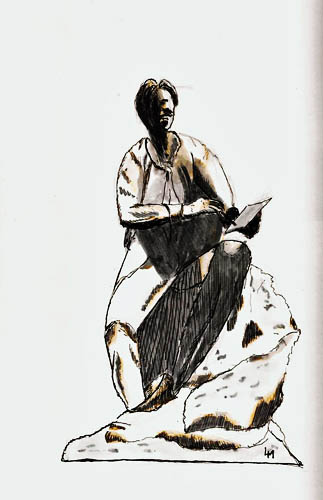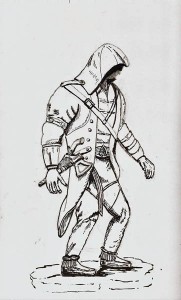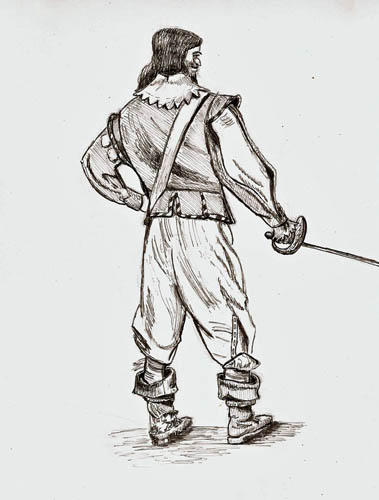I was at the Musée de la Civilisation with Yvan on Sunday. We were sketching. We had decided, at the last minute, to meet there and we had a great time. I suppose it’s somewhat redundant to say we were sketching and we having a good time as one thing means the other to me. Nevertheless, we were sketching and having fun.
I decided to do something very different, at least for me, but first a bit of back story. Albert Laliberté was a Québec sculptor who, like many Quebec artists at the time, headed to France to lead the Bohemian life and bask in the glow of the great French masters, and consume large quantities of wine. While he was there, Albert attended the École nationale supérieure des Beaux-Arts where he developed his skills. One of the things I love about his work is that he sculpting people working with their hands, so he has created bronzes of blacksmiths, cobblers, and even painters.
What has this to do with Sunday sketching at the Musée de la Civilisation? Well, as it happens, the Paris on Stage exhibit has a room devoted to Québec artists who went to Paris and then returned to have significant art careers, like good old Albert Laliberté and several of his bronzes are on display in that room.
From the “I’d like to draw that” point of view, however, the museum’s multiple light sources and always from above, make it difficult to sketch the details of the pieces as they are often in very dark shadow. I thought this might be an opportunity to try something different, for me, and so I launched myself into high contrast mode, concentrating on the shadows as the major source for shape and relegating outline to a more minor role than most of my sketches.
As a first attempt, I was fairly satisfied with the result. I still have much to learn about drawing and I’m REALLY a rookie when it comes to this approach. But, here is Laliberté’s Paysagist (landscape artist). Apologies to Monsieur Laliberté.

Stillman & Birn Zeta (6×9), TWSBI Mini, Platinum Carbon Black, Tombow brush pens








